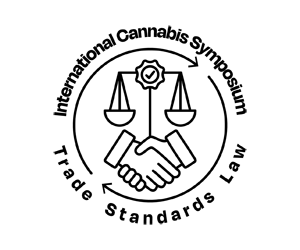September 05, 2024 By Michael McQueeny
Factual Backdrop of the Matter Before the Fourth Circuit
In the case of Tonya Anderson v. Diamondback Investment Group, LLC, No. 23-1400 (4th Cir. 2004), the Court of Appeals dealt with a case examining an alleged discrimination claim resulting from the plaintiff’s termination from employment due to failing two drug tests due to the presence of THC in her system. The plaintiff had argued that the products she was utilizing were lawful, given that they were hemp-derived. Thus, she was entitled to protections under state law that precluded termination on the basis of the lawful off-premises use of a lawful product. The employer had argued, relying on a DEA interim rule and subsequent letter, that at least one of the cannabinoids that the plaintiff had admitted to using, THC-O, was unlawful as interpreted by the DEA, and thus the state statute afforded her no corresponding protection.
2018 Farm Bill and DEA Interpretation of Certain Hemp-Derived Cannabinoids
As many are well aware, the 2018 Farm Bill provided a carve-out for “hemp,” as legally distinct from marijuana under the Controlled Substances Act (“CSA”). Specifically, Section 1639o of Title 7 exempts “hemp,” defined as “the plant Cannabis sativa L. and any part of that plant, including the seeds thereof and all derivatives, extracts, [and] cannabinoids . . . with a delta-9 [THC] concentration of not more than 0.3 percent on a dry weight basis.” Importantly, the DEA, which administers the CSA, has incorporated this definition of hemp into its regulations.
The DEA has promulgated an interim final rule, which identified that “[a]ll synthetically derived tetrahydrocannabinols remain schedule I controlled substances.” The DEA had also issued an opinion letter dated February 13, 2023, that THC-O does not “occur naturally in the cannabis plant and can only be obtained synthetically, and therefore do[es] not fall under the definition of hemp.”
Change in Administrative Deference Following Recent Supreme Court Jurisprudence
Foley Hoag has covered the impact of recent Supreme Court rulings overturning the doctrine of Chevron deference in several noteworthy blogs, including:
- Chevron is Overruled: Supreme Court Abandons Key Regulatory Precedent
- Chevron’s Demise – And What It Means for Healthcare and Life Sciences Companies
- Loper Bright’s Implications for the Food and Drug Administration and Regulated Industry
To briefly summarize the preceding though, on June 28, 2024, in Loper Bright Enterprises v. Raimondo and Relentless, Inc. v. Department of Commerce (collectively known as “Loper Bright”), the Supreme Court struck down the doctrine of Chevron deference, ending four decades of judicial deference to agency interpretations of ambiguous statutes. Since 194, the Chevron doctrine had served as the bedrock of many regulatory actions at the federal level. Under the doctrine, courts followed a two-step process to evaluate an agency’s interpretation of a statute the agency was charged with implementing. In step one, a court was to determine whether Congress clearly addressed the question at issue; if it did, then the court was to apply the plain language of the statute, and no deference was warranted. If, however, the statute was silent or ambiguous with respect to the question at issue, the court proceeded to step two, where it deferred to the agency’s statutory interpretation so long as that interpretation was a “reasonable” one. Under Chevron, agencies had significant flexibility in setting policies where Congress left a gap or failed to speak clearly when enacting legislation.
Whereas under Chevron, an agency’s interpretation of an ambiguous statute was permissible as long as it was reasonable – it did not need to be the best reading of the statute. Now, under Loper Bright, “statutes, no matter how impenetrable, do – in fact, must – have a single, best meaning.” Going forward, “if [an agency’s statutory interpretation] is not the best, it is not permissible.”
Fourth Circuit’s Analysis and Rejection of DEA Findings
The crux of the dispute – as it relates to the DEA’s interpretation of some of the hemp-derived products at issue – related to whether certain products the Plaintiff admitted to using, including THC-O, were lawful.
The plaintiff had contended that because these products are derived from hemp, they are lawful, whereas the employer had argued that these products were unlawful, given prior DEA findings. A North Carolina statute that the plaintiff relied upon stated that is unlawful for an employer to discharge an employee for engaging in the “lawful use of lawful products if the activity does not adversely affect the employee’s job performance.” While the Court acknowledged that there is a legal distinction between hemp-derived products and marijuana, “[w]hether the ‘hemp’ products Anderson used were indeed lawful is an issue of first impression” for the Fourth Circuit. Addressing the elephant in the national conversion as between hemp and cannabis, the Court noted that “[p]roducts derived from the cannabis plant are subject to a complex regulatory scheme,” noting the relevant definitions of marijuana under the CSA, as well as the exceptions for hemp; as well as the fact that the North Carolina Controlled Substances Act mirrored the federal CSA.
The plaintiff in this matter had admitted to taking several different hemp-derived products, including “CBD oil,” “Delta 8, Delta 10, THC-O, and HHC,” though the parties’ arguments largely centered around the legality of THC-O. The Court noted that “CBD and the other products are derived in some way from hemp, which can be legal in some cases, [but] does not end the inquiry of whether the products Anderson took were in fact legal.” (Emphasis in original). The employer, in this instance, pointed to the interim final rule promulgated by the DEA, as well as its opinion letter referenced previously, which stated that THC-O is not a lawful hemp-derived product but rather an illegal synthetic cannabinoid.
The Court noted that a similar argument was already rejected by the Ninth Circuit Court of Appeals in AK Futures LLC v. Boyd St. Distro, LLC, 35 F.4th 682, 690 (9th Cir. 2022), a trademark infringement and copyright dispute. The Ninth Circuit had previously held that it did not need to consider the DEA’s position on synthetically derived substances because the definition of hemp under the 2018 Farm Bill was “unambiguous in its application to all products derived from the cannabis plant, ‘so long as they do not cross the 0.3 percent delta-9 THC threshold,” and that “the source of the product,” i.e., that it was derived from hemp, “and not the method of manufacture – is the dispositive factor for ascertaining whether a product is synthetic.”
The Fourth Circuit further fleshed out this distinction by reference to definitions from the National Institute on Drug Abuse, a division of the National Institute of Health, which defined synthetic cannabinoids as “lab-made substances that are chemically similar to chemicals found in the cannabis plant.” (Emphasis in original). These definitions further noted that synthetic cannabinoids are typically manufactured through the use of “illicitly manufactured synthetic cannabinoids,” which are then added to “dried, shredded plant material.” The Court went on to state that “[t]hese definitions suggest that, rather than originating from organic materials – like the hemp derived cannabinoids at issue – synthetic cannabinoids are just that: compounds manufactured entirely out of synthetic materials.” (Emphasis in original).
The Court ultimately concluded that:
The Fourth Circuit determined that a plain statutory reading that the source of the product was the more compelling basis for determining whether a product was synthetic or not, i.e., whether created from lab-made substances that are chemically similar versus derived from a lawful starting point. “Because the statute is subject to this other reasonable (and, we think, better) interpretation, we reject Diamondback’s contention that the DEA’s interim final rule or letter mandates a finding that THC-O is illegal.”
Rejection of Deference to DEA but Caution on Overly Broad Reading of Legality
To be clear, whereas the Fourth Circuit rejected the claim that hemp-derived products, such as THC-O, were unlawful solely based on the DEA’s interpretation, this did not translate into the broader reading that all products derived from hemp are, therefore, lawful. The court noted that “[o]ur ruling though is of no help to Anderson because she offered no evidence about the delta-9 THC concentrations of the purportedly lawful products she used such that we could determine whether those products were legal under state or federal law.” Citing back to AK Futures, the Fourth Circuit noted that there the products in question were legal under the 2018 Farm Bill because they had evidence “on the veracity of the company’s claims that these products contain no more than 0.3 percent delta-9 THC.” In AK Futures, the Ninth Circuit found that “[a] showing that AK Futures’ products contain more than the permitted threshold level of delta-9 THC would defeat AK Futures’ entitlement to trademark protection.” Here, however, the plaintiff had failed to submit evidence identifying that the products she had taken were beneath that threshold.
Conclusion
The decision in Anderson provides another federal court decision supporting a broad reading of the 2018 Farm Bill, albeit subject to the caveats noted above. Importantly, the decision repeatedly cross-references the need to consult federal and state law. One wonders what the impact of the decision would have been if there was a state-based regulatory regime on hemp-derived cannabinoids, as is increasingly seen in several states across the nation. That being said, this decision further bolsters the continued vitality of the hemp-derived cannabinoid market, provided those businesses and products are otherwise compliant with the other mandates of the 2018 Farm Bill.
Author




















